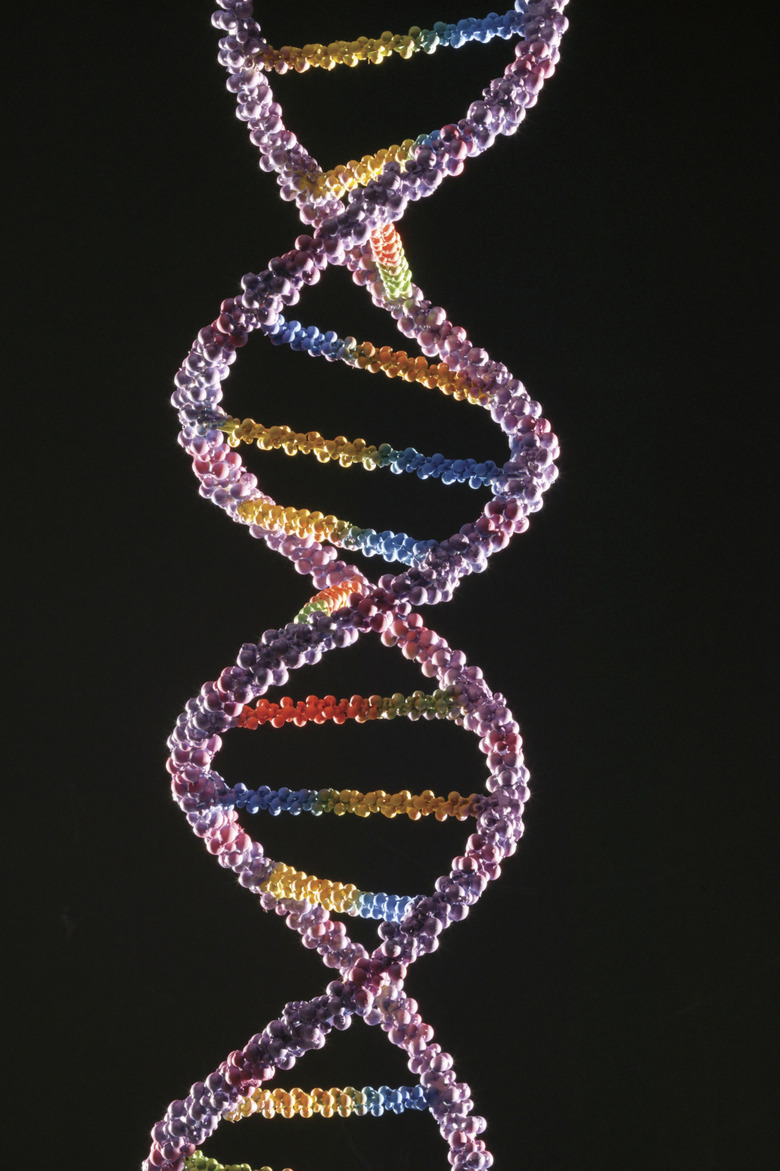What Is The Sequence Of Bases On The Complementary DNA Strand?
Deoxyribonucleic acid, more commonly referred to as DNA, is the primary genetic material for almost all life. Some viruses use ribonucleic acid (RNA) instead of DNA, but all cellular life uses DNA.
DNA itself is a macromolecule that's made up of two complementary strands that are each made up of individual subunits called nucleotides. It's these bonds that form between the complementary base sequence of the nitrogenous bases that hold together the two DNA strands to form the double-helical structure that makes DNA famous.
DNA Structure and Components
DNA Structure and Components
As previously stated, DNA is a macromolecule that's made up of individual subunits called nucleotides. Each nucleotide has three parts:
- A deoxyribose sugar.
- A phosphate group.
- A nitrogenous base.
DNA nucleotides can contain one of four nitrogenous bases. These bases are adenine (A), thymine (T), guanine (G) and cytosine (C).
These nucleotides come together to form long chains known as DNA strands. Two complementary DNA strands bond to each other in what looks like a ladder before winding into the double helix form.
The two strands are held together through hydrogen bonds that form between the nitrogenous bases. Adenine (A) forms bonds with thymine (T) while cytosine (C) forms bonds with guanine (G); A only ever pairs with T, and C only ever pairs with G.
Complementary Definition (Biology)
Complementary Definition (Biology)
In biology, specifically in terms of genetics and DNA, complementary means that the polynucleotide strand paired with the second polynucleotide strand has a nitrogenous base sequence that is the reverse complement, or the pair, of the other strand.
So, for example, the complement of guanine is cytosine because that's the base that would pair with guanine; the complement of cytosine is guanine. You would also say the complement of adenine is thymine, and vice versa.
This is true along the entire DNA strand, which is why the two strands of DNA are called complementary strands. Each and every base on a single strand of DNA is going to see its complement matched with it on the other strand.
Chargaff's Complementary Base-Pairing Rule
Chargaff's Complementary Base-Pairing Rule
**Chargaff's rule states that A only bonds with T and C only bonds with G in a DNA strand.** This is named after the scientist Erwin Chargaff, who discovered that in any DNA molecule, the percentage of guanine is always approximately equal to the percentage of cytosine with the same true for adenine and thymine.
From this, he inferred that C bonds with G and A bonds with T.
Why Complementary Base Pairing Works
Why Complementary Base Pairing Works
Why does A only bond with T and C only bond with G? Why are A and T complements of each other and not A and C or A and G? The answer has to do with the structure of the nitrogenous bases and the hydrogen bonds that form between them.
Adenine and guanine are known as purines while thymine and guanine are known as pyrimidines. All this means is that adenine and guanine's structures are composed of a 6-atom ring and a 5-atom ring that share two atoms while cytosine and thymine are composed of a 6-atom ring only. With DNA, a purine can only bind with a pyrimidine; you cannot have two purines and two pyrimidines together.
This is because two purines bonding together would take up too much space between the two DNA strands, which would affect the structure and not allow the strands to be held together properly. The same goes for two pyrimidines, except they would take up too little space.
By that logic, A could bond with C then, right? Well, no. The other factor that makes A-T and C-G pairs work is hydrogen bonding between the bases. It's these bonds that actually hold the two DNA strands together and stabilize the molecule.
Hydrogen bonds can only form between adenine and thymine. They also only form between cytosine and guanine. It's these bonds that allow A-T and C-G complements to form and, thus, cause DNA to have two complementary bonded strands.
Applying Complementary Base-Pairing Rules
Applying Complementary Base-Pairing Rules
Knowing how DNA strands pair together with these base-pairing rules, you can infer a few different things.
Let's say you have a DNA sequence of a specific gene on one strand of DNA. You can then use complementary base pairing rules to figure out the other DNA strand that makes up the DNA molecule. For example, let's say you have the following sequence:
AAGGGGTGACTCTAGTTTAATATA
You know that A and T are complements of each other and C and G are complements of each other. That means the DNA strand that pairs with the one above is:
TTCCCCACTGAGATCAAATTATAT
Cite This Article
MLA
Walsh, Elliot. "What Is The Sequence Of Bases On The Complementary DNA Strand?" sciencing.com, https://www.sciencing.com/sequence-bases-complementary-dna-strand-8744868/. 19 July 2019.
APA
Walsh, Elliot. (2019, July 19). What Is The Sequence Of Bases On The Complementary DNA Strand?. sciencing.com. Retrieved from https://www.sciencing.com/sequence-bases-complementary-dna-strand-8744868/
Chicago
Walsh, Elliot. What Is The Sequence Of Bases On The Complementary DNA Strand? last modified August 30, 2022. https://www.sciencing.com/sequence-bases-complementary-dna-strand-8744868/
